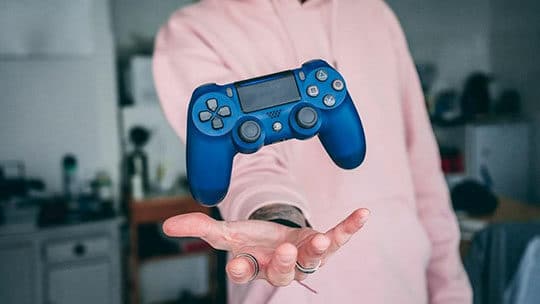Article Note: This article “11 Key Roles and Responsibilities to Build a Successful Game Development Team!” was first published on September 8, 2021. We last updated this article with fresh information on February 3, 2023.
If you have fantasized to be part of a game development company, then the time is ripe. Gaming has developed and grown from its simple roots and turned into a profitable business or profession today. Game development as a profitable business is not as simple as it sounds. To animate characters, keeping the user engaged in the game, creating levels of difficulty, and marketing the video game is a different challenge in itself. Developing a video game involves so many different skills.
There is a team of different professionals involved in developing a video game. The roles and responsibilities of each person are different from the others. You can recruit key persons like project managers, writers, artists, designers, or even developers for your game development team. But you have to be quite selective on this part.
Developing a game, and deciding the roles of each person depends on what type of game and for what platform you are designing the game. Broadly speaking, the team roles that broadly go into video game development are varied. While some may be a top priority, some maybe not be that essential. But still, they very much have a role to play in the overall development of the game.
1. Game Designer

Game Designers are master storytellers, tasked with creating captivating worlds and characters. They craft the rules that drive the narrative of each game – from setting levels to shaping character traits – while ensuring an alluring aesthetic experience through striking visuals and graphics. Game Designers have their hands on every aspect that makes a gaming adventure come alive. They guide users in navigating smooth user interfaces, provide engaging voices for iconic figures within the game, and ultimately set players off into mesmerizing adventures!
Game Designers need a cast of characters to work together and create an engaging experience for the player. With roles established from the onset, Junior Designers are in charge of assigning tasks according to the difficulty level. Lead Designers control the overall game design process. Graphic Artists bring their signature touch by crafting detailed illustrations that round off each character’s individual story arc – ultimately making them come alive within this new world! Creative Designers are also vital in overseeing every aspect of development so all these amazing elements can combine into an unforgettable gaming adventure.
Recommended for you: 12 Career Opportunities in the Video Game Industry.
2. Programmer / Developer

Programmers/Developers weave the fabric of video games through coding. Crafting a game’s codebase and algorithm, they create its intricate world. Programmers are then tasked with debugging, beta-testing, and developing the prototype for further testing – ensuring their virtual creation is ready to be enjoyed!
Programmers have an integral role in crafting the user experience of a game. Working hand-in-hand with Game Designers, they code languages like C# and Python to bring vivid worlds and exciting levels to life. Their expertise must span various skill sets requiring them to be knowledgeable Computer Science graduates prepared for any challenge that comes their way!
3. Game Artist

Game art is a craft of imagination, creativity, and visual expression. Artists are the masters behind each game’s unique design. From crafting compelling characters to creating captivating levels and stages – they bring gaming worlds alive with stunning graphics, animations, and engaging tools. By breathing life into these digital universes through artistic skill -game artists have become pivotal in modern entertainment experiences!
Artists bring the gaming world to life! Working closely with Art Directors, 3D Renderers, and Lead Designers they help create exciting storyboards and vivid characters by combining design elements and animation that stimulate our senses. Not only do artists have an eye for detail but are also highly talented in a variety of mediums such as 3D art, visual design, pixel art, etc., making them essential for creating captivating game visuals.
4. Sound Designer

Sound is as important as visuals in a game design. The work of a Sound Designer is to creatively work with sound, and design the sound to create a range of sound effects and music in gameplay. Visuals may seem boring without a sound. Sound lends environs to the scene and gives a clue as to the nature of the game.
Sound Designers work with Game Designers to understand characters and their voices, animated scenes that may require sound engineering, or lend suitable voices to characters according to their personalities. They have to do sound editing and voice mixing. Sound Designers are highly technical persons, who know how to play around with sound design. They use sound libraries or import sounds to be used in the game. Their skills usually are sensitive to sounds and noises around them.
5. Game Animators

Taking the creative reins, Game Animators are a vital part of any modern video game experience. Through utilizing 3D art and character animation techniques, these Artists breathe life into scenes by crafting expressive animations that draw players in. Together with other creatives such as Graphic Designers, Sketch Artists, and Storyboard designers, they create vibrant visuals for walkthroughs – truly making games come alive!
Game Animators are tasked with creating an exciting and immersive experience for players. They have to bring together a variety of elements such as characterization, backgrounds, game modes, levels, and 3D/2D renderings that come alive through animated moves at different stages in the gaming process. It’s their job to make it all flow seamlessly!
You may like: Love Playing Video Games? Learn How you can Make Money from it.
6. Writers / Narrative Designer

Behind great video games lies a captivating story, spun by the dedicated Storyteller! These talented writers create memorable characters and worlds populated with vivid dialogue. They masterfully craft intricate narratives to give structure to each game. From in-game narration and text, down to even the smallest details of dialogues spoken between its inhabitants.
Capturing the essence of a compelling story and transforming it into an engaging in-game experience is what makes game writing truly special. Game Writers must be able to craft dialogue that breathes life into characters – all while staying true to the atmosphere of the title.
7. Level Designer

A Level Designer is a valuable part of the game development process and responsible for crafting engaging levels. By understanding each level’s requirements, they craft user-friendly interfaces and realistic in-game animations to create an immersive gaming experience.
Level Designers are tasked with creating 3D environments that players can explore within a game. To do so, they need specialized animation software. They also need a deep understanding of various concepts such as physics, architecture, gameplay mechanics, and more. Through their knowledge and skillset, Level Designers breathe life into the levels. They make each level interactable for the player to experience!
8. Quality Assurance / Tester

A Tester is a quality assurance detective, hunting for any video game imperfections that could disrupt the end-user experience. Through intense focus and scrutiny, they examine each element of the gaming universe. From graphics and visuals to ensure an optimal level of visual fidelity; to text content for accuracy; from audio levels being balanced just right; to animation moves in synchronicity with one another as well as character personalities being portrayed correctly throughout different stages or challenges set within the world itself.
With their original insights, QA testers can identify areas for improvement that may be hidden from developers or content creators. They form a critical component of video game development, shaping the ultimate success of any new release.
9. Producer

For a video game to be successful and profitable, it requires careful planning far beyond the development stage. It needs strategic marketing campaigns reaching across leading social platforms and channels that create hype around its launch. That is where Producers come in. They are at the helm of business decisions related to promotional activities, market positioning strategies, pricing policies as well as testing protocols when launching commercialized games into public markets.
The Producer plays an important role, strategizing everything from the cost of making games to ensuring profitable cash flow. They ensure a smooth development cycle by managing agencies such as PR, marketing, and advertising. They do all of these while overseeing any third parties involved in the game’s success.
10. Project Manager

A Project Manager is the core of any game development team. Not only do they ensure all components are in sync, but also supply inspiring leadership and needed resources such as software, hardware, or technical guides. They maintain a keen eye on progress to guarantee ultimate success!
A Project Manager can play a crucial role in game development, establishing strategies and timelines to ensure projects are completed on time. They should possess an overall understanding of the project and guide teams with enthusiasm; carrying out appraisals along the way to measure performance. Experienced professionals within or outside of your team could fill this important position.
11. Marketing / PR

To ensure the success of any game, a comprehensive marketing plan must be put in place. This is typically handled within-house by dedicated teams that cover aspects such as advertising and PR. Additionally, partnering with external agencies can bolster promotional efforts – from organizing exciting events to reaching audiences via social media or traditional outlets like newspapers & television channels. Together these measures will craft an engaging strategy for exposing gamers to your product!
You may also like: Successful Game Development: How to Succeed in the Gaming Industry.
Final Words

Every game development goal requires strong collaboration and coordination among the multiple roles involved in a team. Depending on the scale of the project, the complexity of gameplay features, and even who’s developing it – a different combination of staff may be necessary to bring a title from its early stages right through to launch day success!
Selecting the right talent to develop a game is no easy feat, even if it is only to hire developers for startups! When recruiting for startups, it’s important to consider more than just technical accomplishments. Each role brings its own unique strengths and skill sets that can make or break any gaming project. Critical thought should be put into assembling an optimal game development team who together will bring out their very best in creating a successful end product.





